Why Defined Goals Lead to Better Agent Results
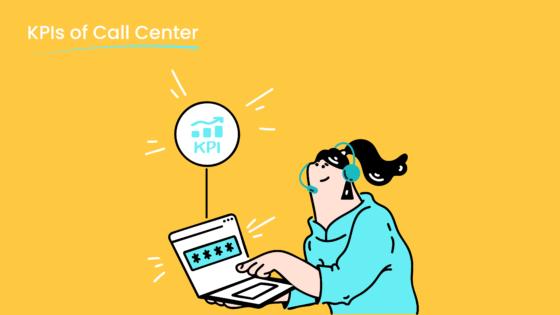
Imagine trying to navigate a maze without a map. That’s what it feels like for agents when goals and expectations aren't clear. Clear goals act as a compass, guiding agents to perform better and focus on what truly matters. They also boost engagement by 60% and productivity by 50% when paired with performance metrics and gamification strategies.
This is where Sobot steps in. By offering tools like the Voice/Call Center, Sobot helps you enhance agent performance through real-time monitoring and seamless task management. These innovations not only improve agent productivity but also drive organizational success by aligning individual efforts with broader objectives. With ongoing training and development, agents become more confident and effective, creating a ripple effect that enhances organizational performance.
The Importance of Clear Goals in Agent Productivity
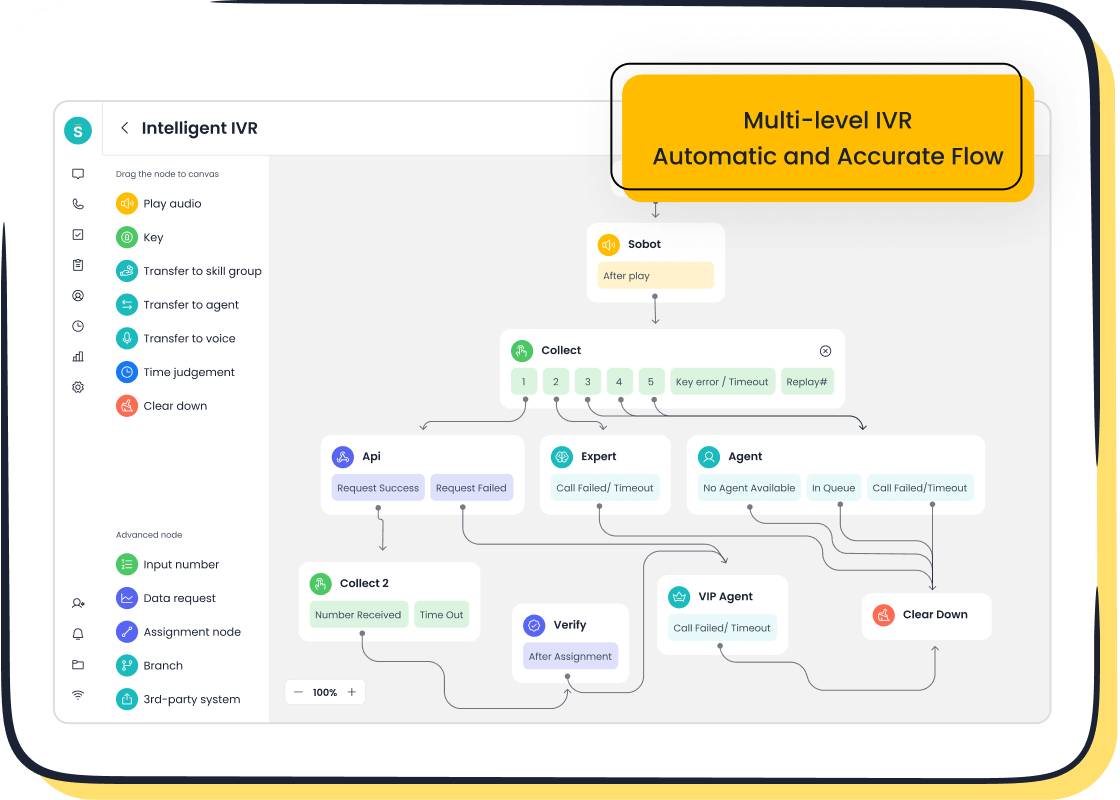
How Clear Goals Provide Direction and Focus
Clear goals act like a GPS for your agents, guiding them toward success. Without them, your team may feel lost, unsure of what to prioritize or how to measure their progress. When you set specific objectives, agents know exactly what’s expected of them and can focus their energy on achieving those targets.
Take the example of a retail company struggling with high checkout abandonment rates. By setting a clear customer experience (CX) goal to reduce abandonment by 20% within six months, the company gave its agents and teams a clear direction. They collaborated with IT and marketing to redesign the checkout process, making it more user-friendly. The result? A 20% reduction in abandonment rates and a 15% increase in online sales. This shows how structured goal-setting can provide focus and drive measurable outcomes.
Sobot’s Voice/Call Center enhances this clarity by offering tools like real-time monitoring and smart call routing. These features ensure agents stay on track, focusing on tasks that align with your business objectives.
Aligning Agent Efforts with Organizational Objectives
When your agents’ goals align with your company’s objectives, magic happens. They don’t just work harder—they work smarter. This alignment ensures every effort contributes to the bigger picture, whether it’s improving customer satisfaction or boosting profitability.
Consider the numbers: companies that align agent efforts with organizational objectives lose 36% fewer customers and see a 30% higher rate of return. This isn’t just theory—it’s proven performance. For example, when customer service teams focus on retention goals, they create stronger relationships with customers, reducing churn and increasing loyalty.

Sobot’s solutions, like its unified workspace, make this alignment seamless. By integrating customer data and communication channels, agents can access the information they need to deliver personalized service that supports your company’s broader objectives.
| Evidence Type | Description | Impact |
|---|---|---|
| Customer Retention | Aligned companies lost 36% fewer customers. | Improved customer retention |
| Return Rates | Companies with aligned sales and marketing. | Increased profitability |
Reducing Confusion and Enhancing Task Prioritization
Confusion in the workplace can derail productivity faster than you think. When agents don’t know what to prioritize, they waste time on tasks that don’t move the needle. Clear goals eliminate this confusion, helping agents focus on what truly matters.
Structured methodologies like OKRs (Objectives and Key Results) are game-changers. They align team efforts with organizational strategy, ensuring everyone works toward the same goal. A PwC analysis found that aligning employees with organizational strategy significantly boosts performance. OKRs also encourage consistent progress tracking, preventing scattered tasks that reduce productivity.
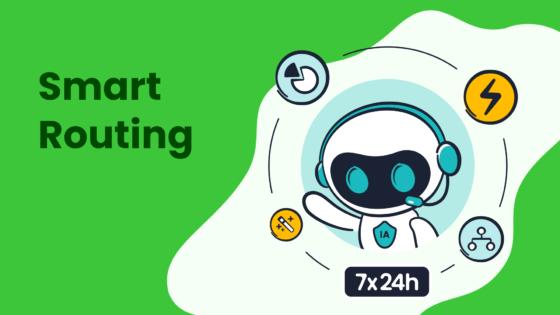
Sobot’s Voice/Call Center takes this a step further. With features like bulk outbound task automation and AI-powered voicebots, agents can prioritize tasks efficiently, reducing reactive management and enhancing workplace productivity.
Tip: Setting measurable benchmarks through key results not only enhances task prioritization but also ensures consistent progress tracking across teams.
The Role of Expectations in Driving Performance
Fostering Accountability Through Transparent Expectations
When expectations are clear, accountability becomes second nature. Agents know what’s required of them and can take ownership of their tasks. This clarity eliminates ambiguity, ensuring everyone stays on the same page. For example, companies that set transparent performance objectives often see improved reliability and commitment from their teams. Regular feedback sessions also help agents identify areas for improvement, fostering a culture of responsibility.
Take Citibank as an example. After introducing a new customer service training program, they saw a 30% increase in customer satisfaction and a 25% boost in cross-selling success. These results highlight how clear expectations and continuous feedback can drive agent productivity and accountability.
Sobot’s Voice/Call Center supports this by offering tools like real-time monitoring and performance tracking. These features help managers set clear benchmarks and provide actionable feedback, ensuring agents stay aligned with organizational goals.
Building Trust and Consistency in Agent Performance
Trust is the foundation of any successful team. When agents understand their roles and expectations, they feel more confident in their abilities. This confidence translates into consistent performance, which builds trust between agents and management. Research shows that transparency fosters trust, which in turn enhances perceived performance.
For instance, nonprofits that prioritize financial transparency often gain higher trust from donors, leading to better outcomes. Similarly, in customer service, transparent expectations signal legitimacy and fairness, encouraging agents to perform at their best. Sobot’s unified workspace simplifies this process by consolidating data and communication channels, giving agents the tools they need to deliver consistent, high-quality service.
Ensuring Alignment with Customer Service Standards
Aligning agent performance with customer service standards is crucial for delivering exceptional experiences. Businesses that analyze customer interactions and establish clear benchmarks often see significant improvements in agent productivity and customer satisfaction. For example, Marriott International increased their satisfaction scores by 15% after acting on survey insights.

Sobot’s Voice/Call Center makes this alignment seamless. Features like smart call routing and AI-powered voicebots ensure agents meet service standards efficiently. By tracking metrics like response times and resolution rates, businesses can continuously improve their service delivery and maintain high standards.
Pro Tip: Use data-driven insights to set realistic benchmarks and track progress. This approach ensures your agents consistently meet or exceed customer expectations.
Benefits of Defined Goals and Expectations for Agents
Improved Efficiency and Task Management
When agents have clear goals, their efficiency skyrockets. They know exactly what to focus on, which eliminates wasted time and confusion. Studies show that improving agent performance and engagement can boost efficiency by 56% and increase customer satisfaction scores by 62%. This happens because defined goals help agents prioritize tasks and manage their time better.
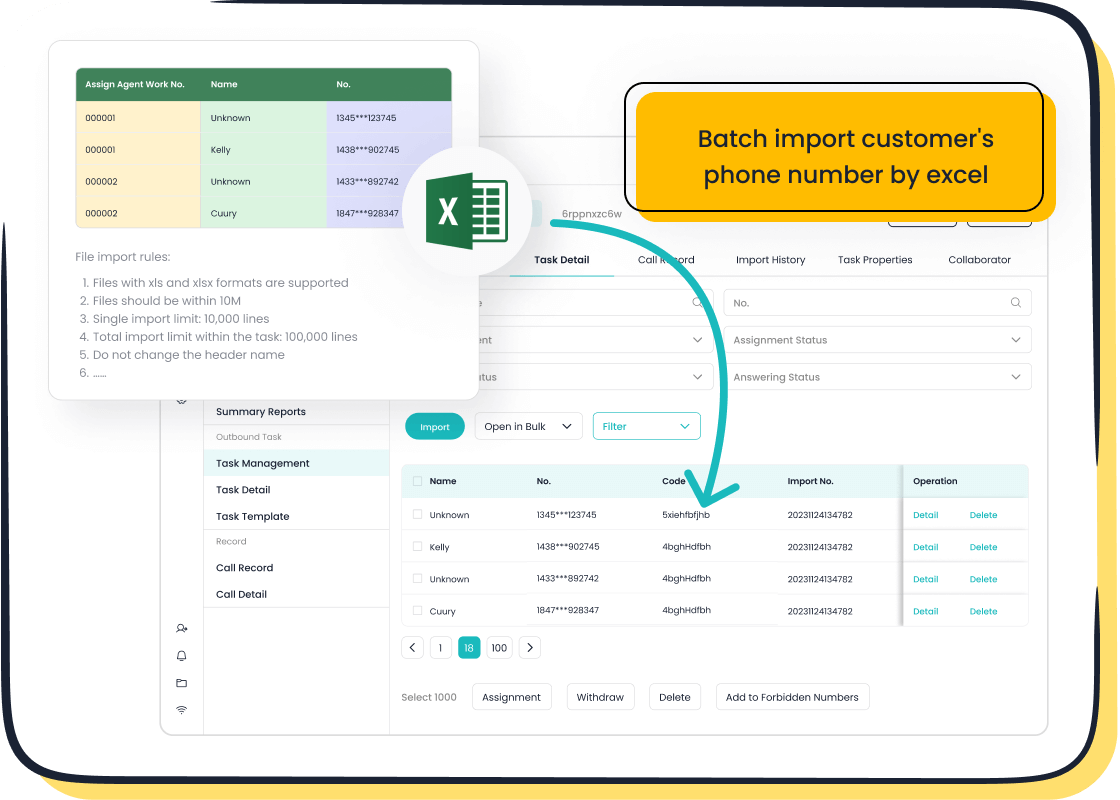
For example, setting SMART goals (specific, measurable, achievable, relevant, and time-bound) ensures agents stay on track. These goals motivate them to perform better, leading to smoother workflows and happier customers. Sobot’s Voice/Call Center takes this further by offering tools like bulk outbound task automation and smart call routing. These features streamline task management, allowing agents to focus on what matters most—delivering exceptional service.
Pro Tip: Use real-time monitoring tools, like those in Sobot’s platform, to track progress and adjust priorities as needed.
Enhanced Motivation and Job Satisfaction
Clear expectations don’t just improve productivity—they also make agents happier. When agents understand their role and how it aligns with company goals, they feel more motivated and engaged. Research shows that employees involved in their own goal setting are twice as likely to have clear expectations. Regular check-ins, like quarterly progress reviews, can increase engagement by 90% and improve perceptions of fairness.
Imagine working in an environment where you know exactly what’s expected and how your work contributes to the bigger picture. That’s the kind of clarity agents crave. Sobot’s unified workspace supports this by giving agents access to all the tools and data they need in one place. This not only boosts their confidence but also enhances job satisfaction, making them more likely to stick around.
Strengthened Team Collaboration and Cohesion
Defined goals don’t just benefit individual agents—they also strengthen team dynamics. When everyone knows their role and responsibilities, collaboration becomes seamless. Teams with clear communication and expectations build trust, minimize confusion, and work more effectively together.
For instance:
- Clear communication ensures every team member understands their goals.
- Defined roles reduce overlap and help everyone contribute effectively.
- Trust among team members fosters stronger relationships and better collaboration.
Sobot’s solutions, like its AI-powered voicebots and unified workspace, make teamwork easier. By integrating communication channels and customer data, agents can collaborate effortlessly, ensuring consistent service delivery. This cohesion not only improves agent productivity but also enhances overall team performance.
Real-Time Monitoring with Sobot's Voice/Call Center
Imagine having a tool that lets you see exactly how your agents are performing in real time. That’s what Sobot’s Voice/Call Center offers. It gives you the ability to monitor calls, track metrics, and make adjustments on the fly. This isn’t just about keeping an eye on things—it’s about empowering your team to perform at their best.
Real-time monitoring helps you identify areas where agents excel and where they might need support. For example, if an agent struggles with call resolution times, you can step in with coaching or resources to help them improve. This proactive approach boosts agent productivity and ensures your team consistently delivers top-notch service.
The numbers speak for themselves. Businesses using Sobot’s Voice/Call Center have seen a 20% reduction in inbound discussions and a 96% positive feedback rate. Customer satisfaction scores (CSAT) have soared to 97%, while the accuracy of AI responses has reached 80%. These metrics highlight how real-time monitoring can transform your operations.
| Metric | Value |
|---|---|
| Reduction in inbound discussion | 20% |
| Positive feedback rate | 96% |
| Customer satisfaction score (CSAT) | 97% |
| Accuracy of AI responses | 80% |
| Customer satisfaction rate | 95% |
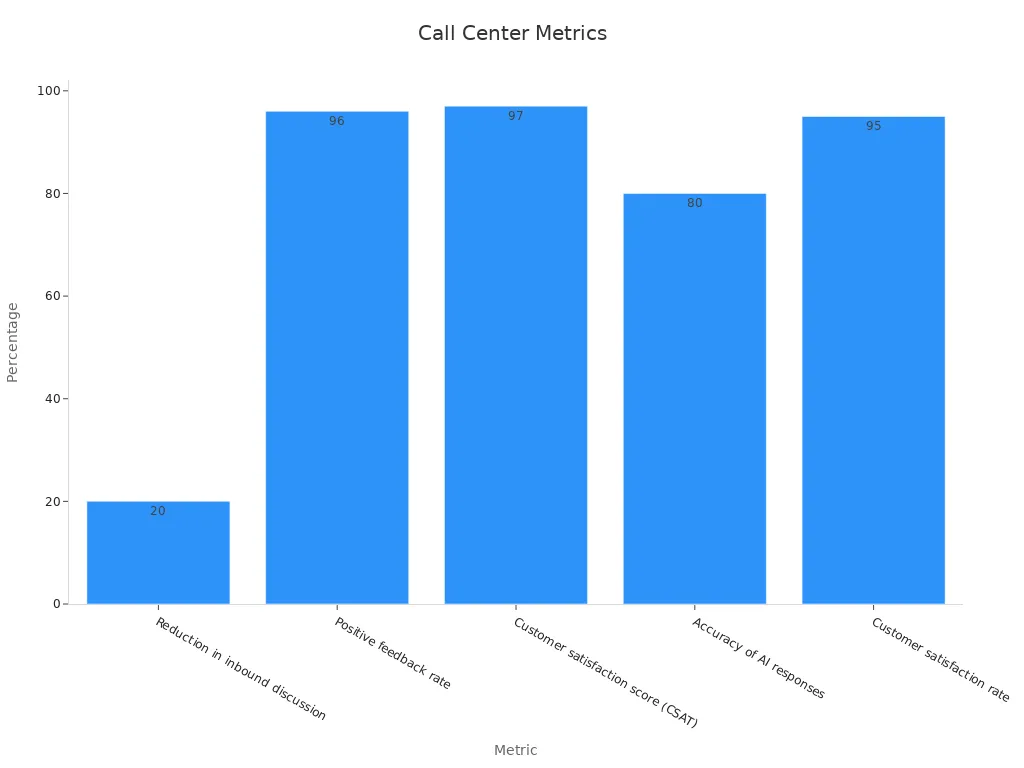
Sobot’s tools also let you track key metrics like response times and resolution rates. This data helps you make informed decisions to improve agent productivity. Plus, features like smart call routing and bulk outbound task automation ensure agents focus on high-priority tasks. With these tools, your team can work smarter, not harder.
Tip: Use real-time insights to provide immediate feedback to your agents. This keeps them motivated and aligned with your goals.
How to Set Effective Goals and Expectations
Using the SMART Framework for Goal Setting
Setting goals without a clear structure often leads to confusion and wasted effort. That’s where the SMART framework comes in. It’s a proven method that helps you create goals that are Specific, Measurable, Achievable, Relevant, and Time-bound. This approach ensures your team knows exactly what to aim for and how to get there.
Let’s break it down:
- Specific: Define your goals clearly. Instead of saying, “Improve customer satisfaction,” aim for something like, “Increase CSAT scores by 10% in the next quarter.”
- Measurable: Add metrics to track progress. For example, monitor call resolution times or customer feedback scores.
- Achievable: Set realistic goals that challenge your agents without overwhelming them.
- Relevant: Align goals with your business priorities. If your focus is on retention, set goals that directly impact customer loyalty.
- Time-bound: Add deadlines to create urgency. For instance, “Resolve 90% of tickets within 24 hours by the end of the month.”
Using this framework not only boosts agent productivity but also creates a sense of purpose. For example, HR teams using SMART goals have reported better resource allocation and improved team performance. Sobot’s tools, like its Voice/Call Center, make goal setting even easier. Features like real-time monitoring and data analytics help you track progress and adjust strategies as needed.
Tip: Break larger goals into smaller milestones. This keeps your team motivated and ensures steady progress.
Establishing Regular Communication and Feedback Loops
Clear communication is the backbone of effective goal setting. Without it, even the best plans can fall apart. Regular feedback sessions and check-ins ensure your agents stay aligned with their goals and feel supported in their roles.
Here’s why feedback loops matter:
| Evidence Type | Description |
|---|---|
| Structured Feedback Sessions | Help agents identify strengths and areas for improvement. |
| Alignment with Business Goals | Ensure agents’ actions contribute to broader organizational objectives. |
| Continuous Communication | Create a growth-oriented environment that motivates agents to excel. |
Imagine this: You hold weekly check-ins to review progress and address challenges. During one session, an agent mentions struggling with call resolution times. With this insight, you provide targeted training or resources to help them improve. This proactive approach not only boosts their confidence but also enhances overall productivity.
Sobot’s Voice/Call Center simplifies this process. Its real-time monitoring tools allow you to gather actionable insights, making feedback sessions more impactful. By fostering open communication, you create a culture of trust and accountability.
Pro Tip: Use performance metrics from Sobot’s platform to guide your feedback sessions. This ensures discussions are data-driven and focused on measurable outcomes.
Leveraging Sobot's Tools for Goal Tracking and Analysis
Tracking progress is just as important as setting goals. Without it, you can’t measure success or identify areas for improvement. Sobot’s Voice/Call Center offers powerful tools to help you monitor and analyze agent performance in real time.
Here’s how Sobot can help:
- Real-Time Monitoring: Keep an eye on key metrics like response times and resolution rates. This helps you spot trends and make adjustments on the fly.
- Data Analytics: Dive deep into performance data to understand what’s working and what’s not. For example, analyze call volumes to optimize staffing levels.
- Smart Call Routing: Ensure high-priority tasks get the attention they deserve, improving efficiency and customer satisfaction.
Businesses using Sobot’s tools have reported a 20% reduction in inbound discussions and a 96% positive feedback rate. These numbers highlight the importance of goal tracking in improving agent productivity. By leveraging these insights, you can refine your strategies and keep your team on track.
Note: Regularly review your goals and adjust them based on performance data. This ensures they remain relevant and achievable.
Integrating Key Performance Indicators (KPIs) for Success
Key Performance Indicators (KPIs) are like the scorecards of your call center. They tell you how well your team is performing and where improvements are needed. By integrating KPIs into your goal-setting process, you can create a clear roadmap for success. These metrics don’t just measure performance—they guide it. They help you identify what’s working, what’s not, and how to adjust your strategies for better results.
Think of KPIs as the heartbeat of your operations. They provide real-time insights into your team’s efficiency and effectiveness. For example, tracking metrics like the Average Speed of Answer or First Call Resolution can reveal how quickly and effectively your agents are addressing customer needs. This data empowers you to make informed decisions that improve both agent performance and customer satisfaction.
Why KPIs Matter in Goal Setting
When you set goals without measurable outcomes, it’s like shooting arrows in the dark. KPIs bring clarity and focus to your objectives. They allow you to track progress, celebrate wins, and address challenges before they escalate. For instance, if your Abandoned Call Rate is high, it might signal issues with call routing or agent availability. By addressing these problems, you can reduce frustration for both your agents and customers.
Here’s a quick look at some essential KPIs and what they measure:
| KPI | Description |
|---|---|
| Average Speed of Answer | Measures the average time it takes for a customer to connect with a representative, impacting satisfaction and conversion rates. |
| First Call Resolution | Indicates the percentage of calls resolved on the first contact, directly correlating with customer satisfaction. |
| Abandoned Call Rate | Reflects the percentage of callers who hang up before reaching an agent, highlighting potential issues in the call process. |
| Conversion Rate | Shows the percentage of calls that result in a desired action, indicating overall effectiveness of the call center. |
| Customer Satisfaction Rate | Gauges customer feedback on their experience, providing insights into service quality and areas for improvement. |
| Average Call Length | Measures the duration of calls, which can influence efficiency and customer perceptions of service. |
Pro Tip: Focus on KPIs that align with your business goals. For example, if customer satisfaction is your priority, track metrics like First Call Resolution and Customer Satisfaction Rate.
How Sobot’s Tools Simplify KPI Integration
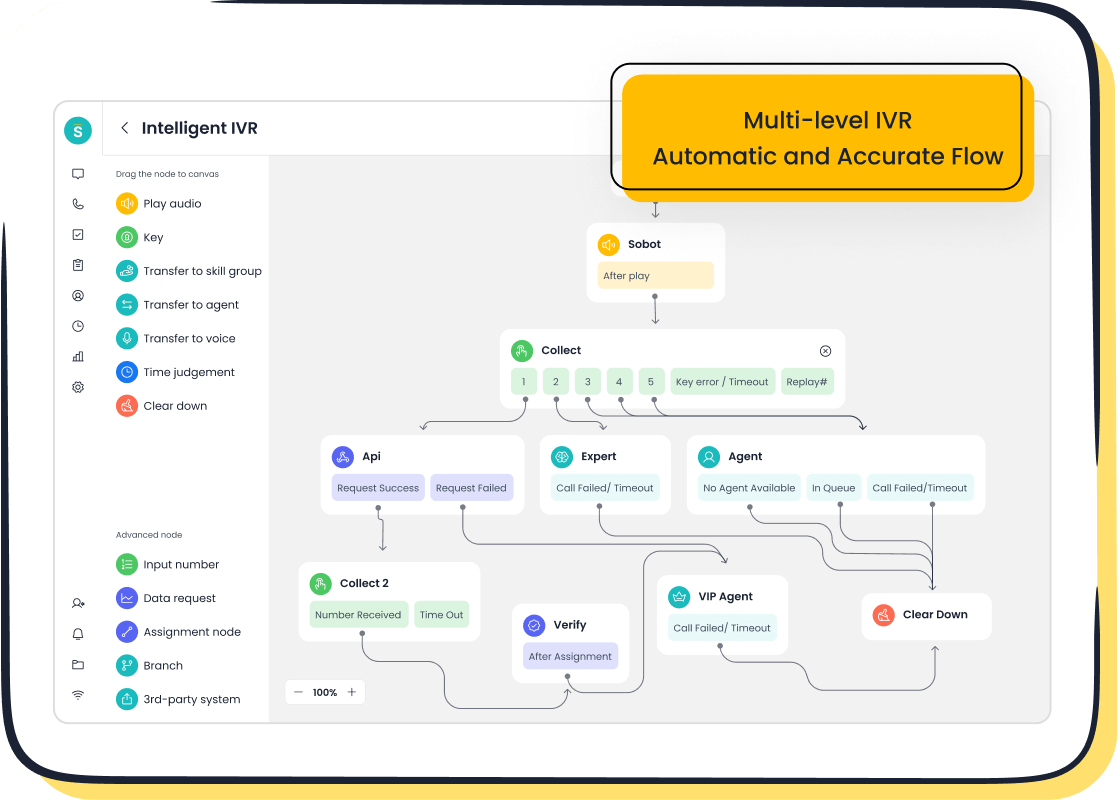
Tracking KPIs manually can feel overwhelming, but that’s where Sobot’s Voice/Call Center comes in. It offers real-time monitoring and data analytics that make KPI tracking a breeze. You can view metrics like response times, resolution rates, and even customer feedback—all in one unified workspace. This not only saves time but also ensures you’re always working with accurate, up-to-date information.
Imagine this: You notice a spike in your Abandoned Call Rate. With Sobot’s smart call routing and bulk outbound task automation, you can quickly reassign resources to handle the increased call volume. This proactive approach reduces wait times and keeps your customers happy. Plus, features like AI-powered voicebots can handle repetitive queries, freeing up your agents to focus on more complex issues.
Turning Data into Action
KPIs are only valuable if you act on them. Use the insights from your metrics to set actionable goals for your team. For example:
- If your Average Call Length is too high, provide training on efficient communication techniques.
- If your Conversion Rate is low, review your sales scripts and identify areas for improvement.
- If your Customer Satisfaction Rate is below expectations, analyze feedback to pinpoint common complaints.
By continuously monitoring and adjusting your strategies, you can create a culture of improvement that benefits both your agents and your customers.
Note: Regularly review your KPIs to ensure they remain relevant to your goals. As your business evolves, your metrics should too.
Integrating KPIs into your goal-setting process isn’t just about tracking numbers—it’s about driving meaningful change. With tools like Sobot’s Voice/Call Center, you can turn data into actionable insights that elevate your team’s performance and deliver exceptional customer experiences.
Real-World Applications in Customer Service

Examples of Clear Goals in Call Centers
Clear goals can transform the way your call center operates. They provide a roadmap for agents, ensuring every action contributes to measurable improvements. For example, setting a goal to reduce call transfers by a specific percentage within a quarter can streamline workflows and enhance customer satisfaction. Similarly, focusing on improving customer feedback response rates ensures no query goes unanswered.
Here’s a snapshot of how clear goals can drive success:
| Improvement Area | Example Improvement |
|---|---|
| Agent Absenteeism | Reduce by X percent this (month, quarter, year) |
| Customer Satisfaction (CSAT) & NPS | Improve by X percent this (month, quarter, year) |
| Call Transfers | Reduce by X percent this (month, quarter, year) |
| Key Performance Indicator (KPI) Y | Improve by X percent this (month, quarter, year) |
| Customer Feedback | Respond to ALL customer feedback |
| Skill Acquisition | Acquire a new skill by this date |
Highly engaged employees are 480% more committed to helping their company succeed. When agents feel connected to their goals, their productivity soars, and your call center thrives.
Setting Expectations for Customer Support Teams
Setting clear expectations is the foundation of a high-performing support team. When agents know their roles and responsibilities, they collaborate better and avoid unnecessary conflicts. For instance, defining expectations around response times or resolution rates ensures everyone works toward the same standards.
| Evidence | Explanation |
|---|---|
| Setting clear employee expectations can reduce unnecessary conflicts among co-workers. | This ensures that everyone understands their roles, leading to effective collaboration and minimizing miscommunication. |
| Employees are less engaged when they lack clear expectations. | Previous Gallup research indicates that only a small percentage of employees are engaged, suggesting that clear expectations are foundational to engagement. |
| Clear expectations could be the most foundational element of employee engagement. | This suggests that when employees understand what is required of them, they are more likely to be engaged and perform better. |
When you set expectations, you create a culture of accountability. Agents feel empowered to meet their targets, and your team becomes more cohesive.
Measuring Success with Sobot's Voice/Call Center Analytics
Sobot’s Voice/Call Center makes it easy to measure success. Its real-time analytics provide insights into key metrics like response times, resolution rates, and customer satisfaction. These tools help you track progress and adjust strategies to improve agent productivity.
For example, if your abandoned call rate is high, Sobot’s smart call routing can reassign resources to handle the volume. This reduces wait times and keeps customers happy. Businesses using Sobot’s analytics have seen a 20% reduction in inbound discussions and a 96% positive feedback rate. These numbers highlight how data-driven decisions can elevate your operations.
Tip: Use Sobot’s analytics to identify trends and provide targeted coaching for agents. This ensures continuous improvement and better results.
Case Study: How OPPO Improved Agent Productivity with Sobot
OPPO, a global leader in smart devices, faced a challenge many businesses encounter—managing a surge in customer inquiries during peak shopping seasons. With thousands of customers reaching out, their agents struggled to keep up. Long wait times and repetitive queries slowed down operations, leaving both customers and agents frustrated.
To tackle this, OPPO partnered with Sobot. By implementing Sobot’s chatbot and ticketing system, they transformed their customer service approach. The chatbot handled repetitive questions, freeing agents to focus on complex issues. This human-machine collaboration significantly boosted agent productivity. In fact, OPPO achieved an impressive 83% chatbot resolution rate, allowing their team to handle more inquiries without feeling overwhelmed.
Sobot also helped OPPO optimize its knowledge base. Using AI, they automated the input of Q&A pairs, cutting maintenance efforts by 90%. This meant agents had quick access to accurate information, improving response times and customer satisfaction. Additionally, Sobot’s integration capabilities unified OPPO’s global customer channels and business systems. Agents could now access customer data seamlessly, reducing confusion and enhancing efficiency.

The results were remarkable. OPPO saw a 94% positive feedback rate and a 57% increase in repurchase rates. These numbers highlight how Sobot’s solutions not only improved agent productivity but also strengthened customer loyalty. By streamlining workflows and empowering agents with the right tools, OPPO created a more efficient and satisfying experience for everyone involved.
This case study shows how investing in the right technology can transform your customer service operations. If you’re looking to enhance your team’s productivity, Sobot’s solutions might be the game-changer you need.
Pro Tip: Automating repetitive tasks with tools like Sobot’s chatbot can free up your agents to focus on what truly matters—building meaningful customer relationships.
Clear goals and expectations are the backbone of agent productivity. They give your team direction, boost motivation, and ensure everyone stays focused on what matters most. When you set structured goals, you create a roadmap that helps agents excel. Performance reviews play a key role here. They provide feedback, recognize top performers, and highlight areas for improvement. This approach not only enhances productivity but also improves customer satisfaction.
Defined goals also build accountability. Your agents know what’s expected, which makes them more engaged and effective. Tools like Sobot’s Voice/Call Center make this process seamless. With features like real-time monitoring and smart call routing, you can track progress and adjust strategies effortlessly. By adopting these solutions, you’ll empower your agents to deliver exceptional service and drive measurable results.
Tip: Start small by setting clear, measurable goals for your team. Use tools like Sobot’s platform to track progress and celebrate wins along the way.
FAQ
What are the benefits of setting clear goals for agents?
Clear goals help agents focus on their tasks, improving efficiency and reducing confusion. They also boost agent productivity by providing direction and measurable outcomes. When agents know what’s expected, they feel more motivated and deliver better results.
How does Sobot’s Voice/Call Center improve agent productivity?
Sobot’s Voice/Call Center offers tools like real-time monitoring, smart call routing, and bulk task automation. These features help agents prioritize tasks and manage their workload effectively. This leads to higher agent productivity and better customer experiences.
Can Sobot’s tools help with team collaboration?
Yes! Sobot’s unified workspace integrates communication channels and customer data. This makes it easier for agents to collaborate and share information. Teams work more cohesively, which enhances overall performance and service quality.
How do real-time analytics support agent performance?
Real-time analytics provide insights into key metrics like response times and resolution rates. Managers can use this data to offer immediate feedback and coaching. This helps agents improve their performance and stay aligned with organizational goals.
Why is agent productivity important for customer satisfaction?
When agents are productive, they resolve issues faster and more effectively. This reduces wait times and improves the overall customer experience. Happy customers are more likely to stay loyal and recommend your business to others.
See Also
Effective Strategies for Managing Live Chat Representatives
Insights Into the Role of IT Call Center Agents
Ten Strategies to Enhance Customer Satisfaction in Live Chat
Ways AI Customer Service Tools Improve Operational Efficiency